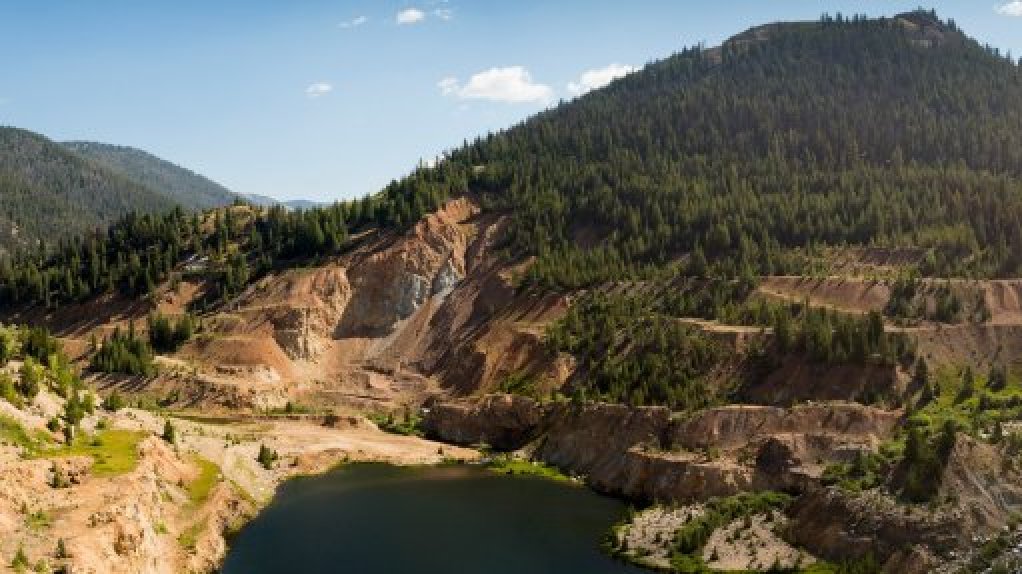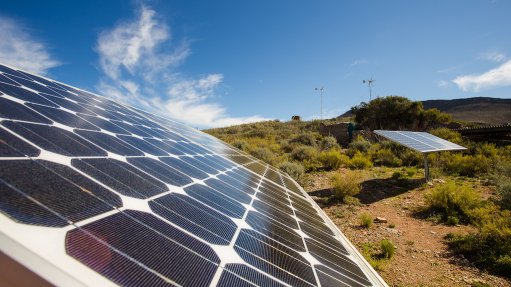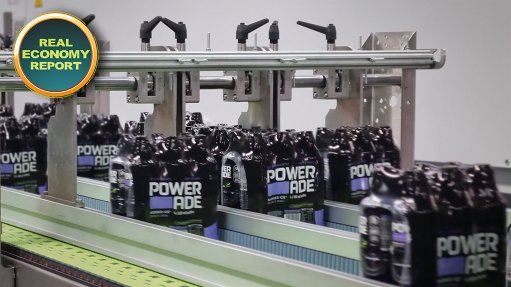Federal green light for Perpetua's Stibnite project
The Stibnite gold and antimony project in Idaho has cleared its final federal regulatory hurdle, owner Perpetua Resource announced on Monday.
The US Army Corps of Engineers has issued the project with a Clean Water Act Section 404 permit, which was the last major federal approval needed before the company can proceed to construction, pending state-level permits and project financing.
“Today’s final federal permit from the Army Corps marks the culmination of eight years of permitting, scientific study, project refinement, and lots of hard work,” said Perpetua president and CEO Jon Cherry.
“We are immensely proud to achieve this milestone. It’s time to move forward and take the Stibnite gold project into a new and exciting phase of development.”
The Stibnite project is set to become one of the highest-grade openpit gold operations in the US, with reserves of 4.8-million ounces of gold. Over the first four years of production, the project is expected to yield about 450 000 oz/y of gold. Equally significant is the site’s antimony resource, which is estimated at 148-million pounds, and represents the only identified domestic reserve of the critical mineral and one of the largest outside China’s control.
Perpetua estimates that Stibnite could meet about 35% of US antimony demand during its initial six years of production. Antimony is a key input for national defence and clean energy technologies. In late 2024, China, which supplies nearly half of global antimony, cut off exports, increasing pressure on the US to develop local sources.
The company is also advancing restoration plans at the historic Stibnite mining district, which include reprocessing legacy waste, restoring wetlands, improving water quality, and reopening blocked salmon spawning habitat.
Perpetua began the permitting process in 2016 under the National Environmental Policy Act, with the US Forest Service serving as lead agency. The process culminated in a final environmental impact statement and record of decision in early 2025. The Section 404 permit evaluation formally began in 2023 and was completed in accordance with the US Army Corps’ projected second-quarter of 2025 timeline and the FAST-41 permitting dashboard.
“As we celebrate receiving the final federal permit for the Stibnite gold project, we applaud the National Energy Dominance Council and the Permitting Council’s efforts to streamline permitting and propel critical mining projects nationwide,” Cherry said. “We believe this administration’s commitment to boosting efficiency without compromising rigorous environmental standards can have a transformational impact on American mining.”
The Trump administration designated the Stibnite project a transparency project under a March 2025 executive order aimed at strengthening US mineral independence. The designation added the project to the permitting council’s FAST-41 dashboard to expedite interagency coordination and oversight.
Perpetua has also received a $59.2-million Defense Production Act grant to help fund construction readiness and permitting efforts. The company said antimony trisulphide from Stibnite is the only known US source that can meet defence needs for small arms, munitions, and missile systems.
The project is expected to generate an average of 550 jobs in rural Idaho and deliver long-term environmental and economic benefits. With the final federal hurdle now cleared, Perpetua’s focus shifts to securing the remaining state permits and financing needed to bring the long-delayed project into production.
Comments
Press Office
Announcements
What's On
Subscribe to improve your user experience...
Option 1 (equivalent of R125 a month):
Receive a weekly copy of Creamer Media's Engineering News & Mining Weekly magazine
(print copy for those in South Africa and e-magazine for those outside of South Africa)
Receive daily email newsletters
Access to full search results
Access archive of magazine back copies
Access to Projects in Progress
Access to ONE Research Report of your choice in PDF format
Option 2 (equivalent of R375 a month):
All benefits from Option 1
PLUS
Access to Creamer Media's Research Channel Africa for ALL Research Reports, in PDF format, on various industrial and mining sectors
including Electricity; Water; Energy Transition; Hydrogen; Roads, Rail and Ports; Coal; Gold; Platinum; Battery Metals; etc.
Already a subscriber?
Forgotten your password?
Receive weekly copy of Creamer Media's Engineering News & Mining Weekly magazine (print copy for those in South Africa and e-magazine for those outside of South Africa)
➕
Recieve daily email newsletters
➕
Access to full search results
➕
Access archive of magazine back copies
➕
Access to Projects in Progress
➕
Access to ONE Research Report of your choice in PDF format
RESEARCH CHANNEL AFRICA
R4500 (equivalent of R375 a month)
SUBSCRIBEAll benefits from Option 1
➕
Access to Creamer Media's Research Channel Africa for ALL Research Reports on various industrial and mining sectors, in PDF format, including on:
Electricity
➕
Water
➕
Energy Transition
➕
Hydrogen
➕
Roads, Rail and Ports
➕
Coal
➕
Gold
➕
Platinum
➕
Battery Metals
➕
etc.
Receive all benefits from Option 1 or Option 2 delivered to numerous people at your company
➕
Multiple User names and Passwords for simultaneous log-ins
➕
Intranet integration access to all in your organisation




















